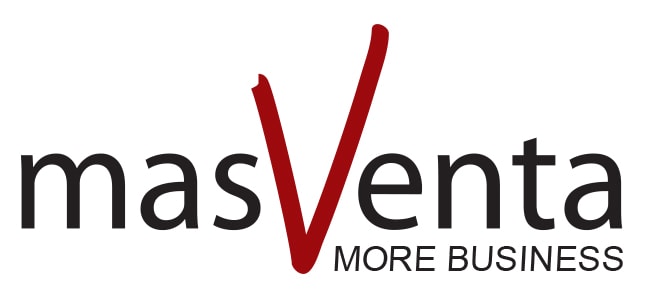Description
Overview
This 2-day course creates a good basis for your participation in agile projects. You will get to know the different roles and their typical tasks in an agile environment, such as Product Owner, Business Analyst, Project Manager, Scrum Master, Developer and Tester. You will also learn to write user stories, the most popular way to document and communicate requirements. The management of product and sprint backlog with the help of user stories is a central element of project management and for prioritizing iterations and releases and is covered in detail.
You will be taught how agile procedures can be tailored and should be tailored to your individual environment so that the agile elements make your projects more successful and, above all, provide more value for the specialist area.
In the course SCRUM will be used as the most popular and widely used agile method, variants of SCRUM and other agile methods as well as various techniques common to many agile methods will also be discussed.
In order to consolidate what has been learned, group exercises are carried out on the basis of a case study and sample solutions are worked out together.
This course can also be carried out in your company as part of a project team. Especially at the beginning of new agile projects, it is very useful and effective to coach a team so that it can form itself optimally. The concrete tasks of the project can be treated in the group exercises in order to ensure a fast and comprehensive applicability of the learned. Usually product backlog, user stories, velocity reports and other documents are created for direct use in the project.
GOALS
- Describe the agile values and principles
- Explain agile roles and responsibilities
- Describe the activities of agile business analysis
- Create User Stories and Acceptance Test Criteria
- Define non-functional requirements and business rules with an agile approach
- Use User Story Mapping to determine the main functions for a Relase
- Describe a release topic using User Story prioritization techniques
- Estimate the size of user stories using Story Points and Planning Poker
- Create release plans based on user stories
- Describe techniques to negotiate changes to user stories during an iteration
- Describe the conditions under which the agile approach can be successful.
- Describe approaches to implement agile approach in larger teams
- Conduct a Retrospect Meeting
CONTENT
Welcome to the Agile basics
- Agile and lean values and principles
- Contrasting agile and waterfall methods
- Agile roles and responsibilities
- The agile business analyst
- The agile project manager
- The agile team environment
- Defining to delivering: agile requirements and planning processes
- Iteration Zero activities
- Defining the vision
- Activity: Define the vision
Definition Agiler demands
- Identifying user roles
- Creating personas
- Activity: Identify user roles and create a persona
- Creating the Product Backlog
- User story components: The 3 C’s
- Guidelines for writing user stories
- Story writing workshops
- Creating low-fidelity prototypes to elicit user stories
- Activity: Story writing workshop
- Deriving user stories from epics
- Identifying story “smells” to avoid
- Defining nonfunctional requirements and business rules
- Activity: Define nonfunctional requirements and business rules using an agile approach
- Business analysis activities
- Characteristics of an effective customer representative
- Using user proxies
- Agile modeling
- Creating requirements runway during iterations
- Just-in-time requirements elaboration
- Agile use cases
- Activity: Write an agile use case
- Writing acceptance tests for user stories
- Activity: Writing acceptance tests
- Managing user stories with agile tools
- Requirements traceability in agile projects
Analysis and prioritization of customer needs
- Levels of planning in agile
- Creating a product roadmap
- Prioritizing for releases
- Prioritizing themes for releases
- Financial prioritization techniques
- Using the Kano model to prioritize desirability
- Using user story mapping to identify key functionality
- Activity: User story mapping
- Using the MoSCoW rules to prioritize user stories within the release backlog
- Activity: Prioritize user stories
Planning of releases and iterations
- Estimating user stories
- Story points and ideal days
- Estimating with Planning Poker
- Activity: Estimate user stories with Planning Poker
- Planning releases
- Forecasting velocity
- Selecting an iteration length
- Creating a release plan
- Activity: Create a release plan
- Planning iterations
- Decomposing stories into tasks
- Estimating tasks
- Creating an iteration plan on the Team Board
- Activity: Create an iteration plan
Performing iterations
- Activities during iterations
- The daily stand-up meeting
- Updating the Team Board
- Using burndown charts to track progress
- Activity: Simulate a daily stand-up
- The iteration review meeting
- Managing changes to the project backlog
- Defining “done on agile projects
- Negotiating changes during an iteration
- Techniques for splitting user stories
- Guidelines for re-estimating
- Growing stories iteratively over iterations
- Activity: Negotiate changes in story size
- Agile technical practices
- Releasing software into production
Adaptation and application of agile procedures
- Adapting agile methods
- Conditions for success for implementing agile methods
- Motivations for implementing agile methods
- Self-organizing teams
- Characteristics of effective self-organizing teams
- Establishing ground rules
- Activity: Team self-assessment
- Scaling agile methods
- Methods used to scale agile methods for larger teams
- Communication considerations for agile teams
- Agile retrospectives
- Course summary
- Activity: Course retrospective
BABOK® Guide
Business Analysis Planning and Monitoring
Requirements Elicitation
Requirements Management and Communication
Enterprise Analysis
Requirements Analysis
Solution Assessment and Validation
Underlying Competencies
PMBOK® Guide
Project Scope Management
Project Communications Management
Project Human Resource Management
Project Time Management
Project Cost Management
Project Risk Management
Project Stakeholder Management

